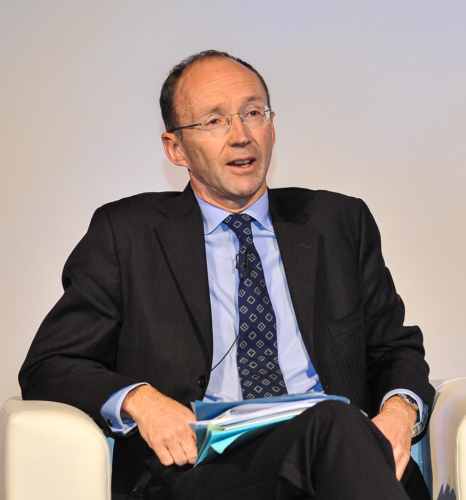5 questions to… Matthew Baldwin

Today, I have the great pleasure to chat with Matthew Baldwin, Deputy Director-General at the EU commission’s DG Move.
In this short interview we’ll discuss Europe’s leadership and ambitions when it comes to sustainable mobility, the role of government’s policies and incentives to change behaviors, and specific solutions for suburban mobility.

JR: Hello Matthew, could you briefly tell us about the role of the EU Commission’s DG MOVE?
MB: DG Move is the European Commission’s transport and mobility department, covering all the different modes of transport, from aviation through road, maritime and of course urban mobility. We also manage big projects like the trans-european networks, and invest a large part of our budget in better connecting Europe.
We also propose all legislation at the European level, which is later legislated through by the Council and the European Parliament.
JR: Do you think Europe is leading the way for sustainable mobility?
MB: Yes, in my opinion Europe is leading the way in sustainable mobility. We face this big existential crisis of climate change and Europe has pledged to become climate neutral by 2050. Moreover as part of the European Green Deal (#EUGreenDeal), we want to reduce our emissions by 55% by 2030, which is a tough but essential goal.
When we look at the overall pattern of greenhouse gas emissions, we see that transport is responsible for one quarter of the emissions. It’s the only sector which is growing. So we need to act. But at the same time, we need to recognise that mobility is something that has revolutionized our working and our personal lives, and brought tremendous progress. Our goal is to make mobility more sustainable, not to curb mobility. So the Commission has come forward with a new sustainable and smart mobility strategy in 2019. In a nutshell it is to ensure that all modes are sustainable, and to ensure – in the shorter term – that sustainable alternatives are available, and properly incentivised.
JR: What about France?
MB: First, France has had strong personal ownership of the climate change agenda by the famous Paris accords of 2015. This historic meeting of the COP brought major breakthroughs, and we as the EU now have to respond to that – for example, we now have a European climate law which binds each Member States to meet this overall 55% target. France has played a major leading role in developing the overall European plan, and will continue to do so as I President of the EU Council in the first half of 2022.
JR : Our mobility has strong negative externalities on the ecosystem (pollution, congestion, wasted time, urban sprawl…). Do you think new technologies are powerful enough to offset this impact in the upcoming years? or will Europeans have to change their habits, and the way they move?
MB: We all face and see these externalities in our daily lives, but what we often fail to realize is the order of magnitude of their cost: between 600€Bn and 1 trillion euro a year just for the European Union. We have pledged to address them in our new mobility strategy, and we need to start now, with strong measures. The good news is that some policy solutions can reduce all of those externalities. For example if we reduce our dependence on conventionally-fuelled, privately owned cars in cities, we not only start to tackle climate change, but we reduce congestion, the number of deaths and injuries from road crashes, we improve our air quality and so on… one policy can deliver on multiple objectives.
I strongly believe that technology will be a key element to foster this change. We are moving into an era of alternatively fuelled cars, and the EU is addressing this with not just new emission standards for car fleets, but a major roll out of alternative fuel recharging points. Yet let’s also keep in mind that if we swap all our conventionally fuelled cars for EV, we are not solving the congestion problem! Green traffic jams are still traffic jams.
We need to incentivize the change of behavior by changing the true cost of mobility, and changing the pattern of mobility especially in our cities. If we can make it safer and more attractive to ride bikes in urban areas, for example, more people will cycle. If we build bike lanes, studies show that the modal share of bikes will sharply increase. If we can connect public transportation with active mobility such as walking and cycling, we build new routes for people to connect and move around.
JR: Urban mobility is one everyone’s lips; every day a new mobility provider pops up for city centers. Yet, hundreds of millions of Europeans in suburban and rural areas still have no option beside using their personal car. How can we improve suburban mobility?
MB: If we just focus on cities for our sustainable mobility, we won’t achieve the results we aim for. Copenhagen, Brussels and most European cities face a large part of their traffic coming from outside of the city. What I like to point out is that these solo drivers often have no choice, and merely respond to the system and the mobility options that we offer them.
We need to think very creatively if we want to reduce the impact of cars and the number of cars in our cities. Carpooling is obviously a great solution, and reserved lanes have been in place for several years in countries like the US. Yet it’s not the only solution. I think we have to see beyond that, for example much stronger parking & ride facilities at the entrance of towns, with efficient intermodality solutions provided (e-bikes, public transport). There is no one and only solution. At the European level, we strive to set the right framework, but in the end we’ll rely on member states and local municipalities to implement the right policies, and make mobility more sustainable.














